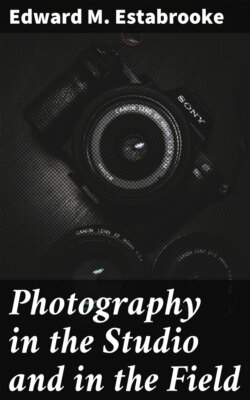Читать книгу Photography in the Studio and in the Field - Edward M. Estabrooke - Страница 3
INTRODUCTION.
ОглавлениеThe most important improvement in photographic processes that has been introduced since Maynard first made collodion, and Archer discovered its adaptability to the production of photographic negatives, is the gelatine bromide dry plate.
Wet plate photography had reached its utmost point of adaptability to the demands of the times.
A few men of marked ability, and the skill of long study and practice, had reached the point of highest excellence in working with collodion, and the great multitude were pressing on toward that designated height to which it was given to but few to attain.
It had been demonstrated that wonderfully beautiful effects could be produced by the collodion process, but that there was a limit beyond which progress could not be made. The great range of subjects in still and animate life requiring very rapid exposures, were practically out of the power of collodion, to compass satisfactory results. At this time, when there seemed to be a very constant and increasingly urgent demand for more rapid acting lenses and for "lightning processes," there appeared the wonderful argentic bromide Gelatine Emulsion, which, in four short years, has superseded the collodion process almost, if not altogether, and besides (notwithstanding the opposition of the elite of the profession, whom for a time it p8 leveled with the rest of the workers, but who were quick to see and acknowledge the extraordinary merits of the new candidate) it has caused such a quickening of the pulses of the business, and such an increase in its range and adaptability as never before was known, and which, in the year or two past, has caused such an activity in invention and in other ways, as to make that period of time so remarkable for the many new things that have been brought out, and the many new processes that have been adopted, as to render a detailed account of such for the profession, and also for the amateur, most desirable.
It is with such a view that this book is offered to the photographic public, and that numerous and still increasing army of amateurs, who have taken up photography as an amusement, to while away a leisure hour.
For to these latter a few hours' study of a good hand-book is about all that is necessary to enable them to expose and develop a dry plate, a little practice only being requisite to the successful performance of the same.
There may be many, however, who, having made a promising commencement, would like to proceed farther and acquire a knowledge of former photographic processes, as well as those which succeed the making of the negative, such as printing, toning, fixing, etc., and in fact, learn how to make a finished photograph.
To such, particularly, and to all photographers, this book is offered, in full confidence that it will be a useful companion in the studio and in the field.
To accomplish this end we will take the reader as an apprentice, and commencing at the beginning, instruct him in that knowledge he would have to acquire were he an actual apprentice in a photographic studio, p9 working the wet collodion process, after which an equally full course of instruction will follow for the dry plate and other new processes, both for negative making and for printing.
In the following pages, also, will be found many useful formulæ that have been carefully culled from a mass of published contributions, from many of the leading spirits in photography, most of which have been verified practically by the author, and others bear on their faces so plainly the impression of their practicability as to need no assurance that they are reliable.
In getting up this work I have availed myself of information from any and all sources at my command, giving credit where possible, and endeavoring to make everything clearly understandable, and neglecting no details necessary to the successful working of every formula, even by the youngest learner. p10
